
Guests
- Jennifer Gonnermanjournalist with The Village Voice.
- Mary A. Lynchattorney for Charline Brundidge.
Charline Brundidge killed her husband, putting an end to the abuse, humiliation, death threats, terror and torture she was subjected to during her seven-year marriage. She has been behind bars for the last 10 years. We broadcast an excerpt of Brundidge describing what happened in a videotape from prison in August. Now activists, along with Libby Pataki, the wife of New York governor, are pushing for her release. Jennifer Gonnerman, who wrote the story of Charline in The Village Voice, and Mary A. Lynch, Charline’s attorney, talk about her story, the criminal justice system and battered women.
Transcript
AMY GOODMAN: You are listening to Democracy Now! The Exception to the Rulers. I’m Amy Goodman.
Marvin Brundidge told his wife repeatedly that he would kill her. Instead, she killed him.
CHARLINE BRUNDIDGE: Someone that I love and I lost, and I took his life. And it’s a day that I don’t want to remember, and it’s a day that I’ll always remember. And he grabbed me around the throat, threw me down on the bed. He was hitting me in the face, slapping me with his open hands and holding me down, because he had my hand. And then, finally, I kicked him. I kicked him off me. He let me go. And I rolled out of the bed, same starting position again over by the far corner. Then I started to walk again, and then he stopped me midway, and then he just grabbed me by the hair with both hands and banged my head into the wall one time. And I slumped. And he banged my head into the wall again. And then I was falling down, and I just said, “God, please, don’t let me hit the floor.” And I grabbed the — my dresser, and it broke the fall. And then I got up, and I was just — and he was standing there, but he wasn’t looking at me. He was looking beyond me, like through me. His eye — and his nostrils, you know, they were flared, and it was like he was foaming at the mouth. And I said, “God, Marvin really hates me.”
And I really didn’t clearly hear the conversation. I don’t know what he said. But then, all of a sudden, I moved from where I was standing, and I took like one or two steps, and I was there. And the way that he opened the drawer is the way that I opened the drawer. And I took the gun out of the holster, and I was right up on him, at arm’s length. And I turned to him, and I pulled the trigger. And I went downstairs, ’cause I was thinking somebody got to know what I did, and so I have to call somebody and let them know that I shot Marvin. And I called the police. And I asked them, the police, “Send some — send the police,” because I had just shot my husband.
AMY GOODMAN: And that was Charline Brundidge describing what happened 10 years ago. She was speaking from prison on videotape this past August. Charline Brundidge killed her husband, Marvin Brundidge, putting an end to the abuse, humiliation, death threats, terror and torture she was subjected to during their seven-year marriage. Charline received a 15-year-to-life prison sentence for her crime, and she’s been behind bars for the past 10 years. But now activists, including Libby Pataki, the wife of the New York governor, are pushing for her release.
Joining us now to talk about her story and the situation of many women who are in prison for murder, for murdering their abusive spouses, we’re joined by Jennifer Gonnerman, who wrote Charline Brundidge’s story in The Village Voice, and Mary Lynch, Charline’s attorney.
Jennifer, why don’t you tell us the full story of Charline Brundidge as you’ve come to understand it, although you’ve never actually gotten a chance to meet her?
JENNIFER GONNERMAN: Charline Brundidge is one of thousands of battered women across the country who killed their abusers during the '70s and the ’80s, before “domestic violence” became an everyday word. And this statewide clemency movement that has sprouted up around her — she hails from Rochester — is based on the idea that if she committed her crime today, in 1996, post-O.J. Simpson, when domestic violence is far better known, that she would have received a sentence that were far less stiff. She's now doing, as you said, 15 years to life. She’s in Albion Correctional Facility in upstate New York. And at this rate, she will not get out of prison until the year 2001.
AMY GOODMAN: She formerly worked in the Los Angeles Police Department, didn’t she?
JENNIFER GONNERMAN: She did years ago, and then she relocated to Rochester, New York, in the ’80s and was actually working for the state as an employee of the Department of Agriculture.
AMY GOODMAN: Now, she admitted immediately that she had killed her husband Marvin. Mary Lynch, you’re her attorney. Does that count for anything? And how was she dealt with by the police? And what was her trial all about?
MARY LYNCH: You know, those of us in the community would think that someone who initially comes forward very forthrightly and says, “I shot my husband,” and then sort of explains some context to it, that that would be helpful to them. They would evidence they don’t have criminal character. It would evidence some honesty, some taking responsibility for actions. However, in the criminal justice system, what it does is it proves that she killed him. So, indeed, the fact that she came forward immediately, as many battered women do who kill their husbands, you know, she called the police on herself. She said immediately, “Please come. I’ve shot my husband.” That, in fact, helped convict her.
AMY GOODMAN: And talk about what happened after that. I guess since she said she was guilty, she didn’t have a trial.
MARY LYNCH: Well, she did have a trial. She had two trials. The first trial that she had, however — you have to remember, this is back in the '80s, and I think it's hard for us to remember how much we didn’t know and didn’t do back then. But in terms of my profession, the legal profession, attorneys were not well educated on how to deal with battered women who were — we didn’t know how to deal with them as victims. We certainly didn’t do well by them when they came in asking for our support when they were battered. And we didn’t know what to do with them when they were defendants. So, for example, today, someone would immediately get an expert. You’d get a counselor to work with the woman. You would prove and document and show what had led up to this very extreme and aberrational act that this woman committed. That was not done. In fact, in the first trial, there was no expert at all used. Charline remembers her attorney sort of saying, “Oh, I don’t know what to do with you.” And remember that most of our prisons are not filled with women offenders. And so, often we don’t know quite what to do with women who act in what looks like self-defense, so that her first trial didn’t have any of that.
And then, very ironically, there was a mistrial. The trial was moved and overturned because one of the jurors himself was a batterer. And after the conviction, his wife came forward and told the judge that. And so she then had a second trial.
In the second trial, there was an expert used, but, again, it wasn’t until about, I think, two weeks before the second trial that many of the many, many witnesses who had observed Charline Brundidge being battered by her husband, being physically assaulted by him, being terrorized by him — and it’s unusual, in Charline’s case, that some of this was public, because for many battered women, it happens only in the privacy of their home. For Charline Brundidge, it happened both privately and publicly. But in the second trial, again, it wasn’t explored in the way that it would be today. There were lots of comments that were made even by the prosecutor in the second trial that sort of shows how far we’ve come. They talk at one point about the way husbands and wives fight. And they were talking about him knocking — you know, slapping her across the face. That, today, is not what we would say: “Oh, that’s how husbands and wives argue.”
AMY GOODMAN: It’s quite a story. I wanted for a second to play another part of this videotape that Charline Brundidge made this past August, although she — guess she doesn’t trust reporters right now to deal with her story, so you didn’t get a chance to talk to her, Jennifer, did you?
JENNIFER GONNERMAN: I didn’t actually get a chance to meet her face to face, unfortunately. But this videotape was made by Charline’s defense team, by Mary Lynch, and an award-winning documentary filmmaker, as a way to tell Charline’s story to the world outside the prison. It’s included in her clemency petition, which was submitted to the governor. It was submitted to the Board of Parole. It was sent to legislators across the state to try to rally support behind Charline. And ultimately, when you’re talking about the case of Charline Brundidge, she does a better job than anyone in explaining.
AMY GOODMAN: How did the Republican governor’s wife, George Pataki’s wife, Libby Pataki, get involved with this case?
JENNIFER GONNERMAN: She heard about the case from a domestic violence activist and invited Mary Lynch, who we were just hearing from, up to the Governor’s Mansion to tell her about Charline’s case. And her attorney and others brought up photographs of Charline’s daughter and grandchildren to help put a human face on her case and show the first lady exactly why they thought Charline Brundidge should be released from prison. And the fact that she does have the support of the first lady of New York definitely bodes well in her favor.
AMY GOODMAN: Mary Lynch, do you think possibly that this Christmas there could be a Christmas pardon? Is that what you would call it?
MARY LYNCH: Well, it would be a clemency. It’s not technically in New York. It’s called a commutation of sentence. But I spoke with Charline yesterday — Tuesday, actually, went to visit her. And I should add that a team of law students have worked on this case. It’s not myself alone. And we, like Charline, are looking at this time as a season of hope. And we are very hopeful that something will — that the right thing will be done in this case. But it’s a very rare exercise of gubernatorial power, so we are trying to be practical, but we cannot help but hope.
AMY GOODMAN: Let’s hear a little more of the story of Charline Brundidge, because that last time that she was beaten by her husband Marvin was certainly not the first.
CHARLINE BRUNDIDGE: [inaudible] of beating me up, of beating up on me, in the public. This particular time when Marvin had pulled a butcher knife on me, we were in the club, at Kelly’s, and he had started an argument with me. He was working himself up to start a fight with me. So then I left. And then I went home, and I put his clothes out in the hallway, in the stair — as you walk up the stairs. So, when he came home, he was in a rage. And he came into the bedroom, and he had pulled me into the kitchen area while he was beating on me. And when we were in the kitchen area, he reached into the drawer, and he pulled out this huge butcher knife. Well, about that time, Tyra and her friend Lori came home. She said, “I’ll get your clothes.” And she said, “Just please don’t hurt my mommy.” And so, he said, “Well you better do something,” he says, “because I will kill her. I will kill this bitch.”
But anyway, he hit me with — he had a ring on his finger, and he hit me in the mouth with his hand. And I didn’t realize it, but I felt something warm inside of my mouth. And that’s what it was. He had busted my lip. I went back to St. Mary’s Hospital, and I had my lip stitched. I called Marvin, and I told him that I was going to the hospital because my lip was busted up pretty badly. I didn’t realize that it was so bad inside. And when I got to the hospital, the police officer was there, and he asked me who did that. And Marvin was standing right there looking at me. And I didn’t — I didn’t say anything. I just said, “Nobody.”
AMY GOODMAN: And that is Charline Brundidge describing her seven years with Marvin Brundidge, who she ultimately killed. Mary Lynch, you’re her attorney. Do you think she should have served any time in jail?
MARY LYNCH: Well, I think, in this case, Charline does have a case of self-defense. And I would hope today that it went — when it went forward, that a jury today would see that and that we would be prepared in the legal profession to try that case that way. But even if one thinks she should serve some time, certainly 10 years is enough. And I should add — you asked me before: Can we hope? It is not too late for people, anyone who is moved by this story, to join us at the Albany Law School Domestic Violence Project and write to the governor, because it is solely in the governor’s discretion to make this decision. And this governor is interested in domestic violence and is interested in hearing from the people of the state of New York. So —
AMY GOODMAN: Well, let me say that this is a national show, and he would get calls and letters, I suppose, from people all over the country. So, I want to warn our listeners, you should take out your pens and pencils, and at the end of the segment, we’ll give you that address and possibly even a phone number. Jennifer Gonnerman, you say that this — in the '70s and ’80s, that women who suffered domestic violence, there wasn't really an understanding, even “domestic violence” wasn’t particularly a term that we knew. But are things really better today?
JENNIFER GONNERMAN: Things are significantly better. I mean, this is a very difficult thing to quantify, but we do have some recent cases that really suggest things have improved in the criminal justice system, that jurors, judges, prosecutors, defense attorneys are far more sensitive to the issue of domestic violence. A couple quick examples. Recently, a Rockland County — this is in New York state — grand jury declined to indict a woman who had stabbed her husband to death with a fishing knife, after evidence of years of abuse was shown. More recently, this past summer, a Bronx woman who shot her husband in the throat — he didn’t die, but she did shoot him in the throat, her abusive husband. She got only probation, did no time behind bars. I mean, those are just a couple examples of the ways in which the criminal justice system is starting to consider self-defense in the case of abused women.
I also wanted to point out that Charline Brundidge’s case is particularly significant because if she is freed, she’ll be the first victim of domestic violence in New York state to benefit from a nationwide movement to release women imprisoned for killing their batterers. The movement has been going on since the late '70s, and governors in 23 states have already granted clemency to more than a hundred women. In 1990, Ohio's governor commuted the sentences of 25 battered women. And Maryland’s governor released eight domestic violence victims from prison in 1991.
AMY GOODMAN: You know, you often hear the story that if the police had responded appropriately to a victim of domestic violence, that she wouldn’t have died. I wonder if the criminal justice system or the police would respond in a better way if they understood that if they don’t respond quickly to deal with domestic violence early on, that the man might die, that the batterer might die. Mary?
MARY LYNCH: Well, I mean, I think that, ultimately, that — every one of us has to see, you know, the violent argument we see on the street, the misdemeanor that comes in and seems like, “Oh, is this harassment, or is this slap?” all of these are pre-murder cases. Ultimately, battered women are faced with: Is it me who’s going to live, or is it he who’s going to live? And they make a choice. And I think we all need to see that what sometimes used to be called as these minor, you know, family offense kind of things, these are pre-murder cases. And we have to take them seriously at the very beginning. The first time a woman gets smacked, gets slapped, gets shoved, gets pushed, gets abused by the partner in her life, that can lead to murder of one of them. It could lead to a killing of one of them.
AMY GOODMAN: Well, Mary Lynch, if you have that address and phone number, I think people would probably be interested in taking some action.
MARY LYNCH: Well, you can address it to Governor Pataki, the Capitol, the New York state Capitol, Albany, New York, 12208, Governor George E. Pataki.
AMY GOODMAN: And do you have a phone number, by any chance?
MARY LYNCH: Unfortunately, there is no one phone number to call on this.
AMY GOODMAN: Well, I suppose people can just call information if they want in the 518 area code, and they can call up and ask for the Governor’s office.
MARY LYNCH: That would be wonderful.
AMY GOODMAN: Well, Mary Lynch, I want to thank you very much for joining us. And, Jennifer Gonnerman, any last comment?
JENNIFER GONNERMAN: I just wanted to make sure, for all those listeners across the country who are planning to write to the governor of New York in an attempt to free Charline, that we could just maybe spell her name, so that when you guys do write your letters, they’ll know exactly who you’re talking about. So, grab a pen. Charline Brundidge, C-H-A-R-L-I-N-E, and the last name is Brundidge, B-R-U-N-D-I-D-G-E.
AMY GOODMAN: Well, I want to thank you very much, Jennifer Gonnerman, for writing the piece in The Village Voice and bringing Charline Brundidge’s case to our attention. And thank you, Mary Lynch, for joining us, Charline Brundidge’s attorney. You’re listening to Democracy Now!, as we go out with the words of Charline Brundidge, before we move on to talk about sexual abuse of women in U.S. state prisons.
CHARLINE BRUNDIDGE: Since I’ve been incarcerated, I’ve found myself. But understand also I feel the loss of Marvin. It won’t overshadow my growth, because I’ve grown while I’ve been incarcerated. This has been like a shelter for me, a healing period in my life, a much-needed healing period in my lifetime. I needed it. I had to find Charline Ophelia Johnson all over again.
AMY GOODMAN: Charline Brundidge. We’ll be back in 60 seconds.



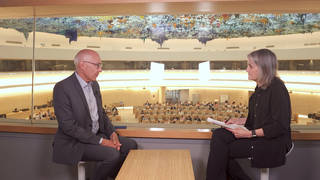

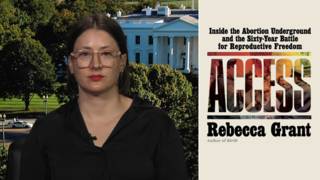


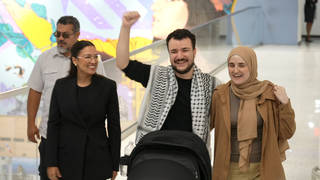

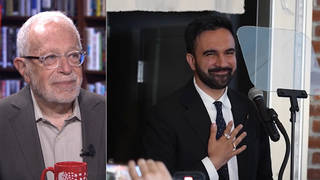

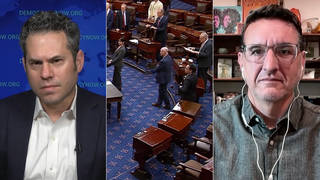
Media Options